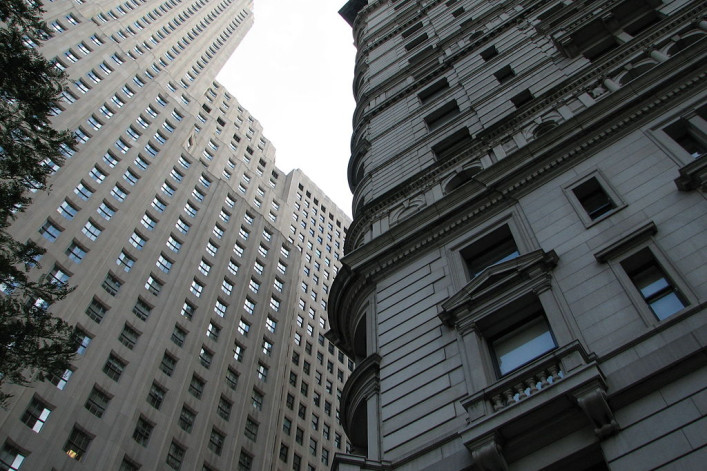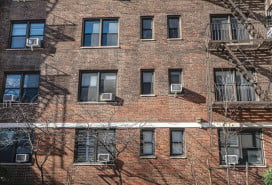With more NYers working from home, could offices be turned into apartments?

One Wall Street, left, is the largest office-to-condominium conversion in New York City, and will create 566 apartments.
With significantly more New Yorkers continuing to work from home, could the city eventually see more conversions of office buildings to apartments?
For now, it’s too early to make those predictions. There’s been no increase in the number of office buildings being shopped around, at least not more than the usual amount, reports Ari Heckman, CEO and co-founder of ASH NYC, a real estate development and design company.
“Everyone is waiting to see what happens,” he says, adding that owners of commercial properties are holding off from making distressed sales for now. Similarly, commercial real estate executives interviewed by MarketWatch described the market as experiencing some “paralysis” for now.
Hotels may become available, Heckman says. Several major hotels in NYC have closed for good, including the 478-room Hilton Times Square and two Courtyard by Marriott hotels.
There are some warning signs: Office leasing is down sharply as companies reduce their presence in Manhattan. In June when New York City opened for business, only 10 to 20 percent of Manhattan’s office workers were expected to return to the office, with that number expected to rise, albeit gradually, throughout the summer, the Wall Street Journal reported.
But Heckman has been back at his own office for three weeks and says, “It’s been a godsend. Many people are excited to be back,” he says. An international poll by property technology platform Equiem taken in July and again this month found similar sentiments: Enthusiasm for working from home slipped 13 percent.
The past may have some clues for the future. New York and other cities around the U.S. saw a wave of commercial-to-apartment conversions in the last decade. A new report from RentCafé using Yardi Matrix data takes a look at this trend and some of the more unusual conversion projects around the U.S.—like a former bomb shelter in South Carolina, stadium in Indianapolis, and a funeral home in New Orleans.
Adaptive reuse is the term that refers to repurposing and converting a commercial space like a factory, school, church or office building into apartments. Chicago leads the way with the most repurposed apartment buildings (91), followed by Philadelphia (85), Los Angeles (74) and New York City (73). However, for cities with the most apartments created by adaptive reuse, NYC leads the pack by a long stretch with close to 18,500 units.
As Brick Underground previously discussed, NYC saw a peak in the number of permits issued for conversion projects in 2014-2016—leading to spate of projects opening in the years that followed.
Heckman’s firm ASH NY developed Glassworks Bushwick at 336 Himrod St. in Bushwick, which involved a conversion of Dannenhoffer's Opalescent, a factory that produced colored glass for many of New York's stained glass windows. The previous wave of conversion projects in NYC involved commercial buildings with small floor plates that were out-of-date for how people work today—which favor open plan concepts, he says.
But demand has shifted in the years since those projects were planned. Sales of new development condos have plummeted as a result of an expensive glut. Across the city, more than 60 percent of new condos remain unsold, The New York Times reports. But Brooklyn and Queens have fared much better than Manhattan in recent months, with seven out of 10 of the neighborhoods with the most signed contracts for new condos, according to StreetEasy.
So anticipating an increase in apartments as a result of the shift away from Manhattan office culture does not add up, at least not for the near future. It may be as Heckman suggests: Announcing a "funeral for traditional offices is premature," he says.

























